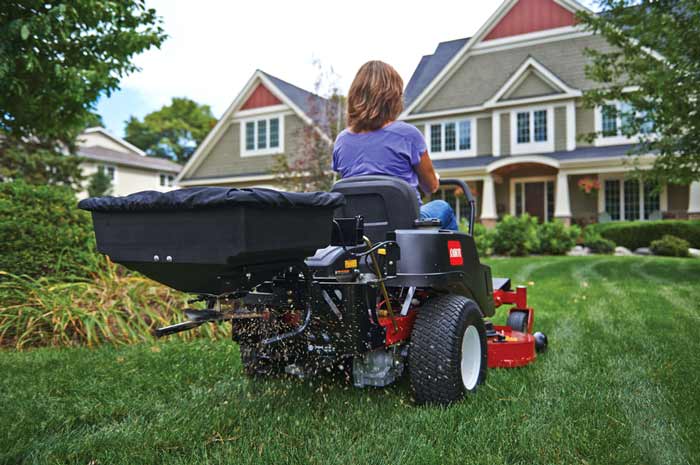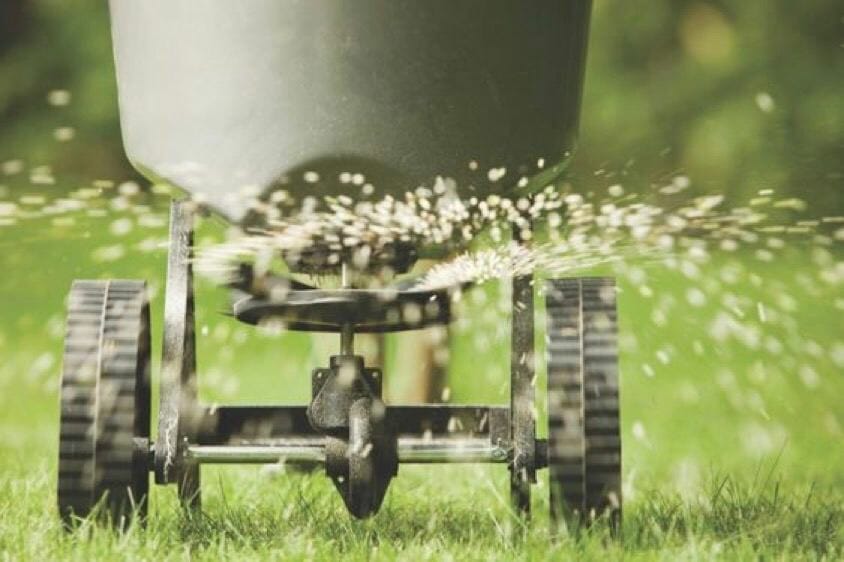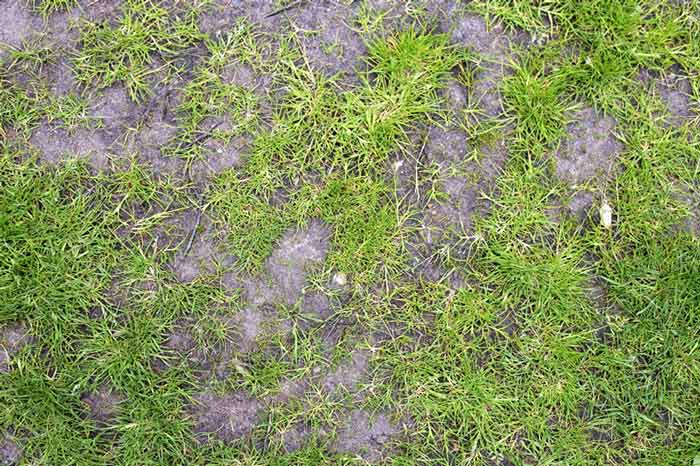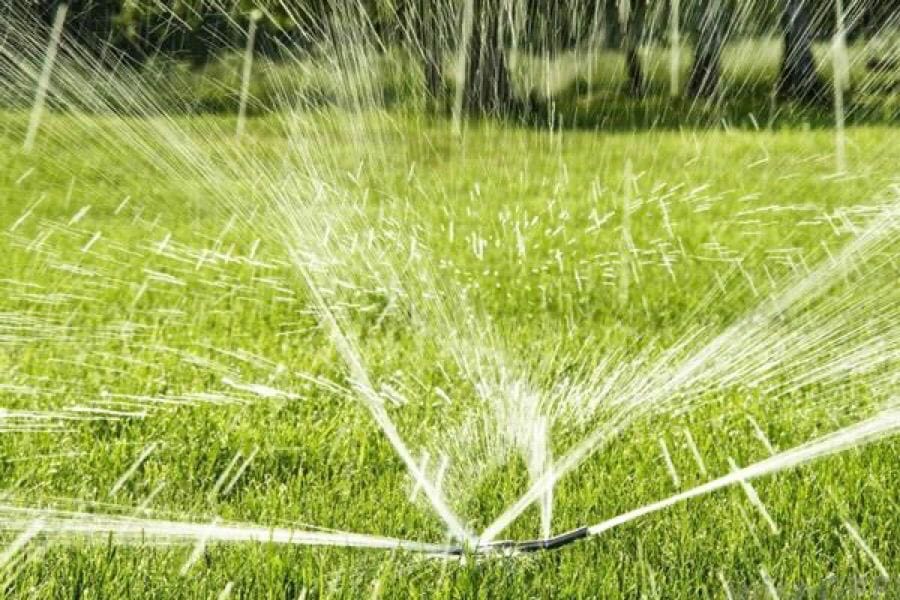Utilizing a lawn overseeding service in your local area is an excellent method for rejuvenating patchy areas, promoting thicker grass growth, and improving the green hue of your yard. Although watering and applying fertilizers may be effective, lawn overseeding could be a more optimal approach in certain circumstances.
Lawn overseeding services near you can quickly give your lawn a once over with some fresh seeds to bolster growth so it comes in greener and thicker than ever.
They can also test your soil to determine which grass variety you should use if you need aeration or dethatching.

What we cover
ToggleWhat local companies do lawn overseeding?
There are numerous companies offering overseeding services near you. They normally include:
- Lawn care services
- Landscaping companies
- Garden maintenance companies
To find out the lawn overseeding companies in your area, you can use Home Garden Guides. Just type in your Zip code, and we’ll connect you with the best pre-screened companies near you.

When is the best time for lawn overseeding?
When planning to look for lawn overseeding services, timing is everything. Generally, the transitional months, Spring and Fall, will always be a good time to grow your grass.
However, the best time for overseeding is different for homeowners in different parts of the country. For the Northern areas with a cold climate, late fall and early spring is the ideal time. For the Warmer southern areas, late spring and early fall are the best time.
Here’s a table showing the best time to overseed your lawn depending on your area.

| Location | Grass Type | When to Overseed |
|---|---|---|
| Pacific Northwest (Washington and Oregon) | Cool-season grasses | 6 weeks before winter and early spring |
| South West (California and Arizona) | Warm-season grasses | Early Spring |
| North-East states (Vermont and Maine) | Cool-season grasses | Late summer and early fall |
| Midwest U.S (Minnesota, Missouri, and Illinois) | Cool-season grass | Mid-August to Mid-September |
| Southern States (Texas, Georgia, and Florida) | Warm-season grasses | Mid-spring and Early summer (April, May, and June) |
How to prepare for lawn overseeding
For a successful lawn overseeding, your preparation process is crucial. Here’s a step-by-step guide on how to do it;

Mow your lawn
First, mow your lawn and keep it extra short, two inches or less, and remove the clippings as well. Next, rake the lawn to remove all the debris and dead grass while also loosening the topsoil.
Doing this ensures that the new seeds have easier access to soil and better rooting on germination.
Correct your existing lawn problems
Before adding your new grass seeds, ensure that you’ve fixed the problems with your lawn. Conduct a soil test and determine what’s missing from your soil. If possible, dethatch and aerate your soil to loosen compact soil and improve its airflow.
You can also add some new topsoil and compost to enrich your existing soil. However, be sure to place just enough soil to ensure it doesn’t suffocate your seeds. 1/8 to 1/4 of an inch should be enough.
Choose a grass seed
Look for a grass seed that’s suitable for your lawn soil. This could be similar seeds to the existing grass, or a better grass variety suitable for your climate.
If your area works well with cool-season grasses, go for seeds like the Kentucky Bluegrass, fine and tall fescue, and the perennial ryegrass. If it works with warm-season grasses, then your grass choice ranges from Bahia grass, Zoysia grass, Bermuda grass, Centipede grass, and the St. Augustine grass.
Warm-season grasses do well in most Southern parts of the United States, while cold-season grasses grow well in states like New England, Northern parts of California, Oregon, and Washington state.
If you live in a transitional zone, your best grass seed choice is the grasses that can survive hot climates and stay dormant during winter. This includes the Bermuda grass, the Centipede grass, and the Zoysia grass.
Spread your seeds
Now that your lawn is ready, simply fill your lawn spreader, set it at the label-recommended rate, and apply it. If your lawn is small, handheld spreaders are usually more effective. For big lawns, look for a broadcast or drop spreader.
Fertilize your seeds
Once your seeds are in the ground, fertilizing them is important to ensure that they receive the nutrients they require to stay healthy. It’ll also help prevent weeds from cropping up.
Go for starter fertilizers, which are rich in phosphorus since phosphorus facilitates faster root growth.
However, note that some fertilizers are restricted in different states for environmental reasons. Check your state restrictions before getting the fertilizer.
Water your seeds
Immediately after planting your seeds, start watering them. The seeds need moist soils to prevent wilting and encourage the growth of healthy roots. For the first 4-5 days, practice light watering the seeds at least four times a day. After that, you can proceed with heavy watering.
Regular maintenance
Once your seeds are firmly rooted in the soil, usually after 2-3 weeks, you can return to your regular maintenance plan. This will ensure the grass remains healthy and looks much greener than ever.
What’s the cost of lawn overseeding near you?
For your total overseeding costs, you can expect to pay anywhere from $400 to $1500 for a 5,000 sq. ft lawn. The national average for the job is around $950.
For small yards in mildly poor conditions, these costs can go as low as $225.
However, for your home, the cost will vary depending on the size of your lawn, the type of grass you choose, the extent of damage on your lawn, and the average labor and material costs in your area.
| Service | Low | High |
|---|---|---|
| Overseeding cost per square foot | $0.05 | $0.15 |
| Overseeding cost per hour | $25 | $37 |
| Overseeding cost per ½ acre | $1,091 | $3,375 |
| Overseeding cost per 1 acre | $2,812 | $5,547 |
| Overseeding cost for 3 acres | $6,547 | $9,642 |
Cost per hour
The average labor costs per hour for overseeding your lawn will also depend on your lawn overseeding company, the size of the yard, and the complexity of the task. It’s, therefore, hard to provide an accurate estimate.
Nonetheless, most American homeowners pay about $25 – $35 per hour. In total, this can accumulate to $150 – $750 in labor costs.
You can also DIY and save yourself most of these labor costs.
Cost per square foot
Normally, the cost of overseeding ranges from $0.05 to $0.15 per square foot. The exact price you’ll pay depends on the type of grass seeds you’ll use. Keep in mind this price doesn’t include other factors like fertilizers and sprinkler systems.
Cost per ½ acre
When overseeding half an acre (21,825 sq. ft) of lawn, you can expect to pay anywhere from $1,091 to $3,375. On average, this would be $2,182.50. This estimate can, however, be much higher or lower depending on the current market price of the grass seeds and the amount of work required on the lawn.
Cost per 1 acre
For an acre (43,650 sq. ft), overseeding will cost you anywhere from $2,182 to 5,547 depending on the types of seeds you use. This converts to an average of $4,365. Again, these estimates are subject to the grass seed’s market price.
Cost for 3 acres
It will cost you around $13,095 on average to overseed a 3-acre lawn. Depending on the seeds used, the price may range between $6,547 to $9,642, excluding labor and other equipment costs.
Other costs you should consider
Besides the seeding and labor costs, you should also consider some key factors that may add up to your total costs. This includes:
Soil testing costs – In the event that your lawn isn’t allowing your grass seeds to grow and flourish, you might need to conduct a soil PH test. These test results should tell you whatever is wrong with your lawn.
If you involve a lawn overseeding service near you, this might cost you anywhere from $50. If you DIY it, this might cost you anywhere from $10 – $20.
Fertilizer costs – Fertilizer is a key component that ensures that your newly over-seeded grass has the right nutrients to grow healthy and strong. It’s also crucial in killing weeds.
You can expect to pay between $0.08 and $0.45 per square foot for the fertilizer. There might also be additional labor costs per hour for applying the fertilizer.
Equipment costs – Lawn overseeding also requires the use of specialized equipment, from Shovels to Hand Casters, Rototillers, and Rakes. When overseeding is a DIY, you may have to buy or rent each of this equipment for $5 – $800.
You’ll also need a sprinkler system to maintain a green and well-hydrated lawn. Sprinkler systems are much costlier, with most homes reporting to have spent nearly $2,300 to install the system.
Maintenance costs – Once you’ve completed the overseeding process, you should also account for the maintenance costs to come. You’ll have to spend time and money on the lawn mowing, tree trimming, and pruning and preparing it for winter.
You can expect to spend a minimum of $51 and a maximum of $700 on lawn maintenance. Most homeowners spend between $127 and $237 for maintenance.
Lawn aeration costs – Lawn aeration is crucial for every lawn. It ensures that your grass receives enough water, nutrients, and sunlight – everything it needs to grow healthy. Experts recommend that you aerate your yard at least twice a year.
Doing this may cost you anywhere from $0.10 to $0.35 per square foot if you hire an expert. This translates to an average of between $93 and $144.
How to hire an overseeding service near you?
Once you’ve decided to involve an expert for professional overseeding services, don’t settle for the first company that sends you a quote. There are several things you should consider to ensure you receive the best services at the best price. Some of them include:
1. Get several quotes
There being many lawn overseeding companies in your area; getting quotes should help you eliminate companies that aren’t within your budget. Ask for the full price for all the services required on your lawn from different companies.
Get their fixed prices, the types of discounts they offer, and the complementary services they offer.
With these figures in mind, you can choose a lawn overseeding company wisely.
2. Ask around and read reviews
You can always tell how good a company is by the reviews they get from their clients. So, go online and read the potential company’s online reviews and testimonials.
Additionally, ask around from friends and relatives who’ve worked with the company before and find out if they were satisfied with their services.
3. Experience
How long has the company been in business? Lawn overseeding companies that have been in business longer usually offer better quality services in a shorter time.
Their experience and time in the industry give them an edge when dealing even with the most complex lawn conditions. They are also less likely to mess up the entire thing and can also teach you some unique hacks to take care of your lawn.
4. Accreditation
You should also confirm that a company is accredited and certified before working with them. The Better Business Bureau (BBB) is an amazing place to confirm this. The site grades businesses from A+ (highest) to F (lowest) based on the quality of their services.
5. Long-term care plan
A good company is one that has a long-term care plan for your lawn. Ask the potential companies about the best lawn treatment plan for your yard and confirm that they’ll be there for you in the long haul.
Mistakes to avoid when overseeding
From the steps above, the overseeding process appears to be really simple – and it is! However, some homeowners still mess up in the process, and this leads to failed overseeding.

Here are the top mistakes to watch out for:
- Using wrong seeds – As earlier mentioned, the seeds you choose for your lawn have to be compatible with your lawn’s soil and area climate. Otherwise, you’ll have to deal with stunted grass growth and weeds infestation.
- Using too many seeds – Even though you’ll need more seeds when overseeding than when first seeding, don’t use excess seeds. Stick to the recommended seeding rates. Too many seeds increase the competition for resources in your lawn, and hence some of your grasses may never grow.
- Poor timing – Some homeowners choose to ignore the seasons and overseed their lawns immediately after they notice thinning grass or bare spots. If it’s not the right season for seeding the grass seeds, doing this will only be a waste of money.
- Maintenance care too early – After overseeding, you need to give your seeds time to root and sprout. Don’t mow your lawn or use weed treatments during the first few weeks – they’ll distort the root development, affecting grass growth.
Can I fertilize after overseeding?
Yes! Fertilizing after overseeding is crucial in providing enough nutrients for the growth of the grass and keeping away weeds. You can fertilize the grass immediately before or after distributing the seeds.
When to fertilize after overseeding
Around 4 – 6 weeks after overseeding. After this period, the seeds have already germinated and need a lot of nutrients, mainly nitrogen, potassium, and phosphorus.
Fertilizing now with an all-natural fertilizer provides these nutrients, ensuring the grass grows healthy and attractive.
Caution: Take note of the fertilizer numbers to ensure that their nutrient concentration isn’t too high. Too much fertilizer will burn your lawn and kill your grass!
How much do you water after overseeding?

Once you’ve laid out your newly overseeded lawn, you’ll have to adapt to a new watering system. This is because your seeds are yet to develop roots. You’ll have to keep up with this system until your grass is finally mature, which can take between 6-9 months.
Here’s the guide you should follow:
Before the seeds germinate
This refers to the first 21 days after overseeding the lawn. For the first five days, you’ll have to water your grass around 4 times for shorter periods of time. After this, you can switch to watering the grass about 2-3 times a day for around 15-20 minutes.
The principle behind this is “less water, more frequently.”
4 – 5 weeks after overseeding
Now that the grass has germinated, the watering principle changes to “More water, less frequently.” The goal is to maintain about 2-3 inches of soil moist at all times. Therefore, you can have your sprinklers running for about an hour three times a week.
Use tuna cans to measure an inch of water each time you water your lawn and a rain gauge to adjust your watering after rainfalls.
5 – 9 months after overseeding
During this period, your lawn grass is likely to have matured and developed deep-enough roots. You can now reduce your watering habits, but ensure the soil receives at least 2 inches of water each week.
You can water the lawn once or twice a week, and sparingly if the lawn receives enough rainfall.
DIY vs. Local Overseeding pro?
The best thing about overseeding is that you have the option to do it yourself or to hire a professional lawn overseeding service near you. The decision lies with you.
But if you’re wondering which one is better, here are the pros and cons of each.

| DIY Overseeding | |
|---|---|
| Pros | Cons |
| – Pride and accomplishment for single-handedly taking care of the lawn. | – You may not have the knowledge to conduct and handle some advanced overseeding techniques. This may result in some costly mistakes. |
| – Control over how often your lawn is maintained. | – You might waste a lot of time due to lack of the right equipment and resources. |
| – It’s much cheaper to do if you have the right machines. | – The cost of renting or buying equipment is high. It might almost be equal to paying pros. |
| – Chance to spend time outdoors and enjoy the fresh air | – Unnecessary aeration if compact soils isn’t the problem with your lawn. |
| – Insight into other faulty areas in your compound that might have gone unnoticed. | |
| Professional Lawn Overseeding | |
|---|---|
| Pros | Cons |
| – Have the right machines and so they can do the job much faster and correctly | – Professional companies increase labor costs, and hence it becomes more expensive. |
| – They have more experience and can correctly diagnose what’s wrong with your lawn. They can also recommend the right times to aerate and overseed. | – No flexibility. Most companies work with their schedule and can’t work on your lawn anytime you need them. |
| – Professionals guarantee good results, and they can work until you’re satisfied. | – Inexperienced teams. Some companies don’t have experience and can mess up your lawn. |
| – Professionals can offer more than just overseeding services for free, e.g., pesticide services. | – Automatic treatments – Some companies offer automatic lawn treatments even when your lawn doesn’t need it. |
| -Some pros partner with seed companies hence can provide the best quality seeds for your lawn. | |
| DIY Overseeding | |
|---|---|
| Pros | Cons |
| – Pride and accomplishment for single-handedly taking care of the lawn. | – You may not have the knowledge to conduct and handle some advanced overseeding techniques. This may result in some costly mistakes. |
| – Control over how often your lawn is maintained. | – You might waste a lot of time due to lack of the right equipment and resources. |
| – It’s much cheaper to do if you have the right machines. | – The cost of renting or buying equipment is high. It might almost be equal to paying pros. |
| – Chance to spend time outdoors and enjoy the fresh air | – Unnecessary aeration if compact soils isn’t the problem with your lawn. |
| – Insight into other faulty areas in your compound that might have gone unnoticed. | |
| Professional Lawn Overseeding | |
|---|---|
| Pros | Cons |
| – Have the right machines and so they can do the job much faster and correctly | – Professional companies increase labor costs, and hence it becomes more expensive. |
| – They have more experience and can correctly diagnose what’s wrong with your lawn. They can also recommend the right times to aerate and overseed. | – No flexibility. Most companies work with their schedule and can’t work on your lawn anytime you need them. |
| – Professionals guarantee good results, and they can work until you’re satisfied. | – Inexperienced teams. Some companies don’t have experience and can mess up your lawn. |
| – Professionals can offer more than just overseeding services for free, e.g., pesticide services. | – Automatic treatments – Some companies offer automatic lawn treatments even when your lawn doesn’t need it. |
| -Some pros partner with seed companies hence can provide the best quality seeds for your lawn. | |
Best grass seeds for overseeding?
It depends on your local climate and soil conditions. Different grasses grow better under different conditions. For instance, warm-climate grasses grow better in warm and hot areas, while cool-climate grasses grow better in cool climates.
However, most warm-season grasses aren’t used for overseeding, except for the Bermuda grass. Cool-season grasses work better for overseeding.
Some of the most popular picks for overseeding include:
- Kentucky Bluegrass – Blends well with Tall Fescue grass. It’s robust and can handle extreme temperatures and droughts.
- Perennial Ryegrass – Fine texture, high density, germinates quickly, and grows well with the annual bluegrass.
- Annual Ryegrass – Cheap and general purpose. Prevents erosion and adds appeal to your turf.
- Red Fescue – Delicate grass, but great for filling bare patches. Best when mixed with other varieties.
| Grass name | Brand | Cost | Coverage |
|---|---|---|---|
| Buffalo | Scotts | $37.90 | 200 sq. ft |
| Bermuda | Scotts | $32.98 | 5,000 sq. ft |
| Fescue/Bluegrass | Pennington | $24.65 | 750 sq. ft |
| Kentucky Bluegrass | GroSmart | $39.99 | 2,500 sq. ft |
| Perennial Ryegrass | Scotts | $27.90 | 2,900 sq. ft |
| Annual Ryegrass | Pennington | $31.75 | 2,000 sq. ft |
| Tall Fescue | Greenview | $34.99 | 1,750 sq. ft |
| Grass name | Brand | Cost | Coverage |
|---|---|---|---|
| Buffalo | Scotts | $37.90 | 200 sq. ft |
| Bermuda | Scotts | $32.98 | 5,000 sq. ft |
| Fescue/Bluegrass | Pennington | $24.65 | 750 sq. ft |
| Kentucky Bluegrass | GroSmart | $39.99 | 2,500 sq. ft |
| Perennial Ryegrass | Scotts | $27.90 | 2,900 sq. ft |
| Annual Ryegrass | Pennington | $31.75 | 2,000 sq. ft |
| Tall Fescue | Greenview | $34.99 | 1,750 sq. ft |
FAQ’s
Should I aerate before overseeding?
Yes! Aeration is crucial in ensuring that your grass has easy access to soil air, water, and other nutrients. It opens up the compacted soil in your yard, which would otherwise inhibit the flow of these essential growth components.
Aerating before overseeding ensures that your grass seeds have all the right conditions to flourish.
It’s, however, not compulsory to aerate before overseeding. You can also aerate after overseeding but ensure that the soil isn’t too dry. Aerating your yard under dry conditions enhances weed growth and stresses the grass.
Should I dethatch before overseeding?
Yes. Thatch is one of the main reasons why your grass starts to thin out and faces slow growth. It forms a huge layer of debris that limits the flow of air, water, and nutrients to your roots.
When you dethatch before overseeding, you expose your soil to more conditions that foster healthy root development for your grass.
In most cases, you should also dethatch before aerating your lawn.
Do you put topsoil over seeds?
You can, but it’s not necessary. In fact, adding topsoil over the seeds may actually suffocate them instead of protecting the seeds -The topsoil might be too heavy for the seeds to sprout.
A better alternative is taking time to prepare your soil before overseeding. Once you’ve dethatched and aerated your soil, plant the soil at a depth of about an eighth to a quarter-inch from the surface.













